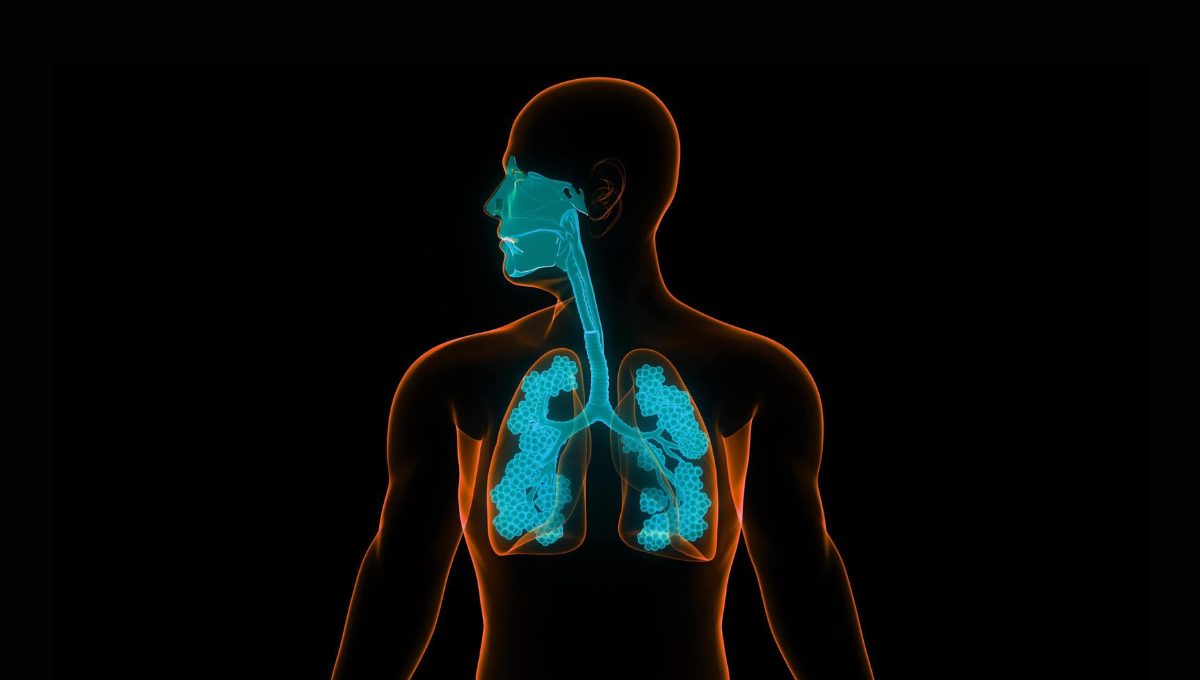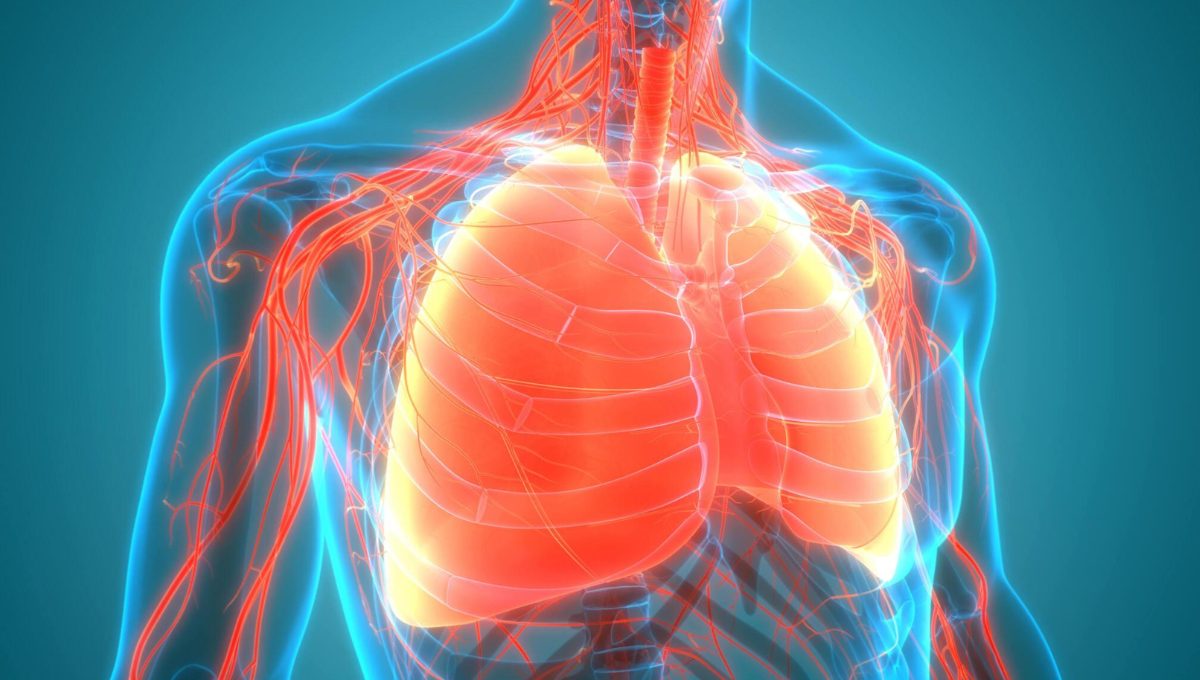Stem Cell Therapy for COPD Management: A New Hope
Research shows that nearly 5% of the world’s population suffers from Chronic Obstructive Pulmonary Disorder (COPD), and it is the third leading cause of death worldwide. This prevalent lung disease affects men and women equally, resulting in poor quality of life. Although treatments are limited, significant developments in regenerative medicine, mainly stem cell therapy, offer hope to millions battling this progressive lung disease.
This article explores the revolutionary treatment for COPD that has emerged recently, focusing on the potential of stem cells to repair damaged lung tissues and reduce inflammation.
Table of Contents:
Understanding Chronic Obstructive Pulmonary Disorder (COPD)
Chronic Obstructive Pulmonary Disease (COPD) is a group of respiratory diseases that results in lung inflammation and narrowing of the airways. COPD encompasses debilitating conditions such as emphysema or chronic bronchitis that damage the lung tissues and cause difficulty breathing.
While traditional treatments focus on managing symptoms by slowing disease progression, the damage to the lungs is irreversible, and it can recur in the future, limiting the patient’s ability to do simple daily tasks. Symptoms of COPD include shortness of breath, chronic cough with phlegm, breathing problems, tiredness, wheezing, pressure in the chest, frequent respiratory infections, and fatigue.
Cigarette smoking is the prime cause of COPD, as 70% of COPD cases in high-income countries are due to excessive smoking. Other than this, long-term exposure to toxic pollutants like chemical fumes, air irritants, and specks of dust also contribute to the development of COPD in patients.
Read Also: Stem Cell Basics: What They Are And How Do They Work
The Emergence of Stem Cell Therapy For COPD Management
Preclinical studies and research suggest that stem cell therapy can alleviate the symptoms and manage COPD. Mesenchymal stem cells’ anti-inflammatory and immunomodulatory properties can help repair inflamed lung tissues and restore lung function. Further, their regenerative capabilities can self-renew and regrow healthy tissue to interact with the host environment, accelerating the healing response.
Stem cells are undifferentiated immature cells found in the human body that have the power to develop and multiply into any cell type. Clinics use these cells to prepare stem cell injections to treat various health conditions, from chronic obstructive pulmonary disorder (COPD), to cardiovascular disease, autoimmune disorders, and orthopedic injuries. In the context of COPD, the stem cells administered into the patient’s body differentiate into lung-specific cells, such as alveolar and bronchial cells, to promote tissue regeneration.
How Mesenchymal Stem Cells Address Tissue Repair and Regeneration
Stem cells exert their therapeutic effects in COPD management through different mechanisms, from paracrine signaling to immunomodulation and anti-inflammation to tissue regeneration. This multifaceted approach to treating respiratory diseases eliminates the pathological processes and promotes lung repair.
- Paracrine Signaling – The newly infused stem cells release signaling molecules and bioactive factors, such as cytokines, chemokines, growth factors, and extracellular vesicles. These paracrine factors affect the surrounding cells in the damaged tissue and promote regenerative processes.
- Immunomodulation – MSCs have immunomodulatory properties that suppress the excessive growth and activation of immune cells that contribute to lung inflammation. The stem cells play a vital role in shifting the immune response from pro-inflammatory immune cells to anti-inflammatory agents, promoting the proliferation of regulatory T cells (White blood cells that control immune response).
- Anti-inflammatory effects – Stem cells directly secrete anti-inflammatory molecules such as TGF – β and IL – 10 to counteract the inflammation and suppress the activity of immune cells and inflammatory mediators.
- Tissue regeneration – The stem cells differentiate into lung cell types, such as endothelial, epithelial, bronchial, and alveolar cells, which replace or repair the diseased cells and contribute to tissue regeneration for functional recovery.
In summary, stem cells’ therapeutic effects directly dampen inflammation of lung tissues, prevent further damage, and simultaneously create a favorable host environment for healthy and faster tissue repair and regeneration. Once they reach the damaged area in the lungs, they trigger cell-to-cell interaction with the neighboring cells and the extracellular matrix to activate the secretion of paracrine factors.
Scientists believe this multifaceted mechanism of stem cells is effective in cell proliferation and differentiation, modulating immune system behavior, and stimulating angiogenesis. However, more research and knowledge are necessary to understand the dynamic connection between stem cells and the host environment in lung tissue repair and regeneration.
Improvements Observed in Patients After Stem Cell Therapy
The patients receiving stem cells for COPD have reported significant improvements in their symptoms and enhanced quality of life. They have experienced reduced difficulty in breathing, improved lung capacity, and relieved symptoms like coughing and shortness of breath. Stem cell therapy for COPD suppresses inflammation in the lung tissues, improves permeability, and reduces oxidative stress. Patients also experience a regain in their exercising ability, increased strength in muscles and bones, better weight control, and decreased risk of cardiovascular diseases.
Future Perspectives Stem Cells in COPD Treatment
Continued research and clinical trials on stem cells for COPD management pave the way for more advanced therapies, addressing all the significant challenges and optimizing their effectiveness. The future of stem cells holds great promise, and ongoing exploration of its advancements is expected to shape the future of COPD treatment.
One of the emerging trends in the field is advanced cell engineering, which boosts the therapeutic potential of mesenchymal stem cells. Researchers aim to modify stem cell properties through gene editing and manipulation and optimize their regenerative capabilities, tailoring them to the precise needs of COPD patients and reprogramming stem cells to make them patient-specific induced pluripotent stem cells, offering the possibility of personalized stem cell treatments.
Read Also: Stem Cell Treatment: Recent Advancements And New Applications
Key Takeaway
With the rapid pace of scientific advancements in the stem cell field, the concept of a cure for Chronic Obstructive Pulmonary Disorder (COPD) seems no longer a dream. Stem cell therapy shows promising results in regenerating damaged lung tissues and improving the lives of millions of COPD patients. The application of stem cells shows positive outcomes by relieving symptoms and managing respiratory disease effectively.
Patients wondering where to get the best stem cell therapy can contact Life Altering Stem Cell Therapy Institute. Our well-established stem cell center in Mexico provides advanced treatments and the best hospitality experiences in a homely atmosphere. We are well-equipped with cutting-edge technologies and an experienced team of stem cell experts, ensuring swift recovery and positive outcomes in less time.
Effectiveness of Stem Cell Therapy For Lung Diseases Explained
Lung diseases like chronic obstructive pulmonary disorder (COPD), fibrosis, and pneumonia have a significant impact worldwide. These respiratory diseases can result in protracted illness and severe breathing problems requiring long-term medications and even hospitalization. Medical researchers are investigating regenerative medicine approaches for treating lung diseases.
Stem cell therapy is one of the most significant scientific breakthroughs in the medical field, making healthcare professionals and patients eager to explore its efficacy in treating chronic respiratory disorders.
Find out in detail about stem cell therapy for COPD, benefits, current status and progress of clinical trials, risks, and more.
Table of Contents
- What is Lung Disease or Chronic Obstructive Pulmonary Disorder?
- Role of Stem Cell Therapy for Lung Diseases
- Where do Stem cells for lung treatment come from?
- Benefits of stem cell therapy for COPD
- Cautions on Stem Cell Therapy for Lung Disease
- Current Status and Future of Stem Cells for Lung Diseases
What is Lung Disease or Chronic Obstructive Pulmonary Disorder?
Chronic Obstructive Pulmonary Disease (COPD) is a group of lung disorders that inhibit the lung’s functional abilities, resulting in shortness of breath, coughing, and fatigue. COPD damages the airways or other specific regions in the lungs, blocking airflow and causing difficulty breathing.
In people with COPD, the lungs get clogged and damaged due to increased mucus formation in the airways and inflammation in the bronchi walls. Experts believe excessive smoking and long-term exposure to pollutants and airborne irritants are two primary reasons for COPD.
Role of Stem Cell Therapy for Lung Diseases
Lung disease, or COPD, is a prevalent health issue with a rapid rise in cases in the post-pandemic era. Currently, there is no definitive cure for lung diseases; however, with healthy habits like quitting smoking, exercising regularly, and maintaining a proper diet, one can manage the symptoms of COPD.
Multiple studies on stem cells have recently demonstrated their effectiveness in reducing lung inflammation and improving its functional capacity to breathe air in and out. Stem cell administration in the infected lung prevents further damage to lung cells and promotes the growth of healthy cells to replace the damaged cells.
Read Also: Stem Cell Basics: What They Are And How Do They Work
Where do stem cells for lung treatment come from?
The adult human body is a rich source of stem cells as they exist in various organs and tissues such as bone marrow, adipose or fat tissue, liver, skin, and even teeth. Apart from adult stem cells, mesenchymal stem cells isolated from the human umbilical cord tissue are another great source of pluripotent stem cells.
Clinicians are studying stem cells’ therapeutic potential in treating COPD, primarily focusing on human umbilical cord tissue-derived mesenchymal stem cells (HUCT-MSCs) because of their abundance of supply and ease of collection.
HUCT-MSCs are ideal for stem cell therapy for COPD because these are pluripotent cells, meaning they can turn into any cell type and regrow cells to heal the diseased area. They can transform into lung, heart, nerve, blood, bone, skin, and cartilage cells.
Benefits of Stem Cell Therapy for COPD
The path for choosing cell-based therapy has become more desirable for patients with COPD and other chronic lung diseases because existing treatment protocols are expensive and complicated, such as lung transplant or ventilation.
On the contrary, stem cell treatment is a less invasive and cost-effective solution, making it a preferable alternative for patients. The therapeutic benefits that cellular therapies for lung diseases offer are discussed below:
- Reduces inflammation – The stem cells are rich in anti-inflammatory properties, which help reduce the inflamed bronchi walls and clear the airways for breathing.
- Immune system regulation – HUCT-MSCs heal damaged lung tissues by modulating immune responses and preparing a healthy environment for tissue repair and regeneration.
- Promotes angiogenesis – The new stem cells that enter your body through the therapy promote the growth of new blood vessels, which better transport oxygen to and from the lungs to the circulatory system.
- Improves breathing – Stem cells differentiate into lung cells and multiply to develop connective tissues and membranes forming the air sac lining. Healthy air sacs support healthy breathing by efficiently circulating oxygen and removing carbon dioxide while breathing out.
Besides, stem cell therapies aim to provide long-lasting outcomes, and patients can see a sooner reduction in their primary symptoms, such as lung inflammation and shortness of breath. However, the body can take three to six months to achieve peak improvement post-therapy.
Read Also: Healing Power Of Stem Cell Therapy: A Comprehensive Guide
Cautions on Stem Cell Therapy for Lung Disease
Despite the promising potential of regenerative medicine for lung diseases, several risks still exist. Firstly, in cases where stem cells are collected from a patient’s body, it carries a risk of reintroducing diseased or damaged cells. Secondly, if cells are taken from a donor, there is no guarantee that the patient’s body will accept the cells. There is always a chance of cell rejection. The donor must undergo several blood examinations and HLA matching to ensure genetic compatibility. Still, no 100% matching is guaranteed.
The best way to avoid such risks is to get stem cell therapy from centers that utilize human umbilical cord tissue-derived stem cells. These cells are isolated from the cord blood following healthy births and have high proliferation capabilities and differentiation potential.
Current Status and Future of Stem Cells for Lung Diseases
Several research studies examine stem cell treatments for lung problems and chronic disorders. Among the multiple areas of studies, the most promising topic focuses on the efficacy of stem cells in treating chronic obstructive pulmonary disorder (COPD) and pulmonary fibrosis.
In COPD, stem cell therapy using umbilical cord tissue-derived mesenchymal stem cells is safe and reliable. It improves lung function, reduces inflammation, and slows disease progression. Studies have also found that cell-based therapy enhances the quality of life for COPD patients.
Various clinical research is studying new ways to understand how lungs work and how to treat lung diseases. Scientists are especially interested in cells called endothelial progenitor cells and mesenchymal stem cells. They’re testing these cells in clinical trials for conditions like pulmonary hypertension and COPD, and they’re planning more studies to learn even more.
Key Takeaway
Stem cell treatment is better than traditional treatment approaches in treating lung disease. Conventional methods are associated with prolonged side effects and involve high costs. Stem cells naturally promote tissue repair and regeneration and improve functions impaired by the disease. The newly administered stem cells regenerate damaged cells and set up a healthy microenvironment to stimulate the release of growth factors and cytokines to boost tissue regeneration.
Are you planning to get stem cell therapy? Life Altering Stem Cell Therapy Institute is a renowned clinic for affordable stem cell therapy in Mexico. Post COPD treatment at our institute, patients have reported immense reduction in cough, shortness of breath, and improvement in stamina. They have even gained emotional stability with the alleviation of symptoms and happily returned to everyday life after a few days of the treatment.
Please book a consultation with our medical experts to learn more about stem cells and determine your eligibility for stem cell therapy.




